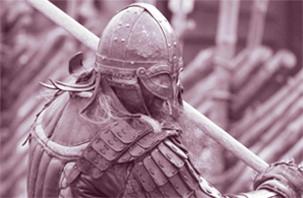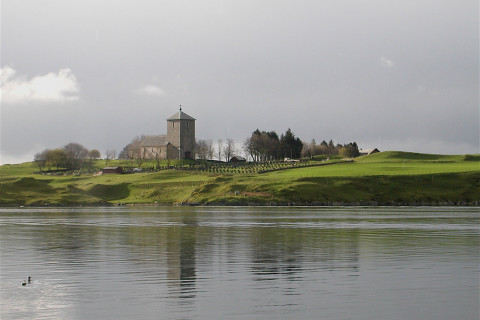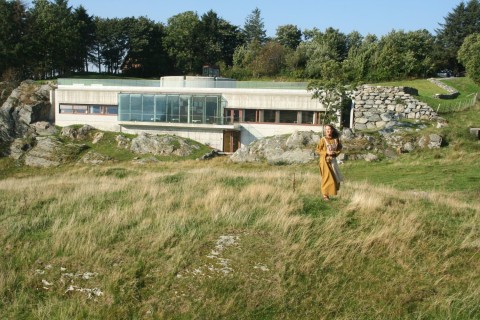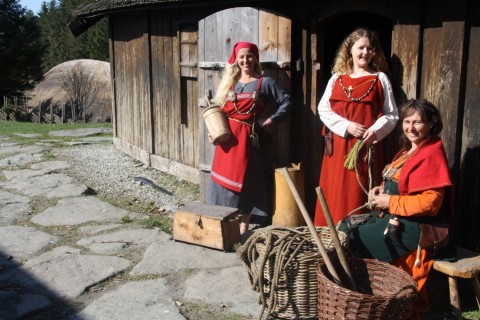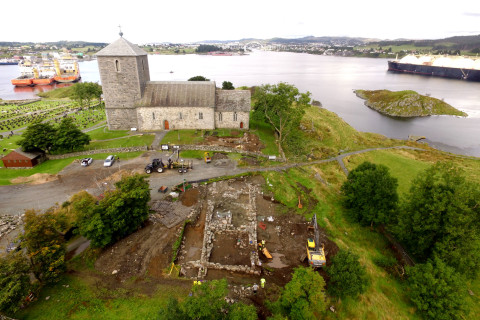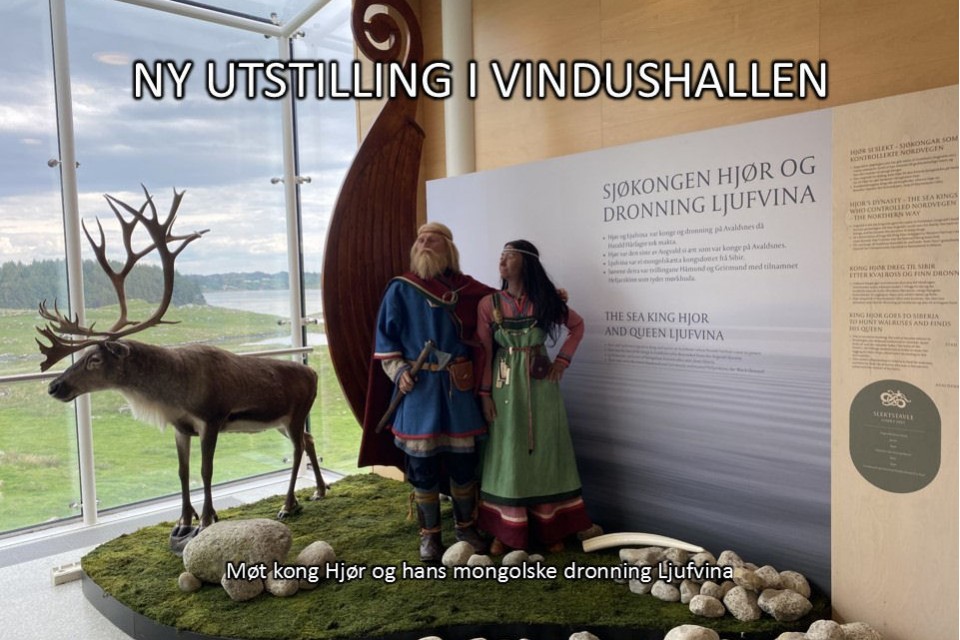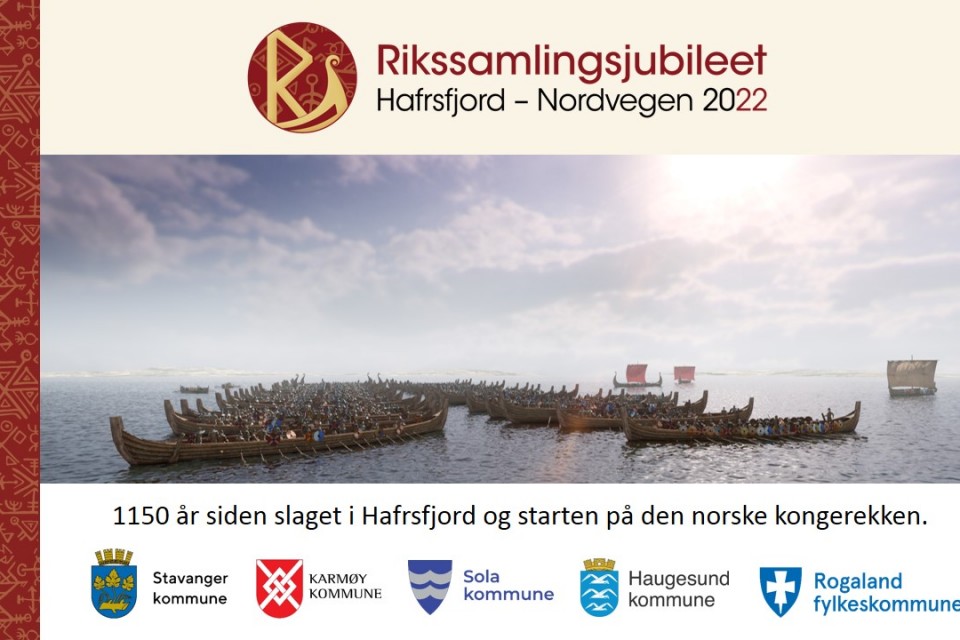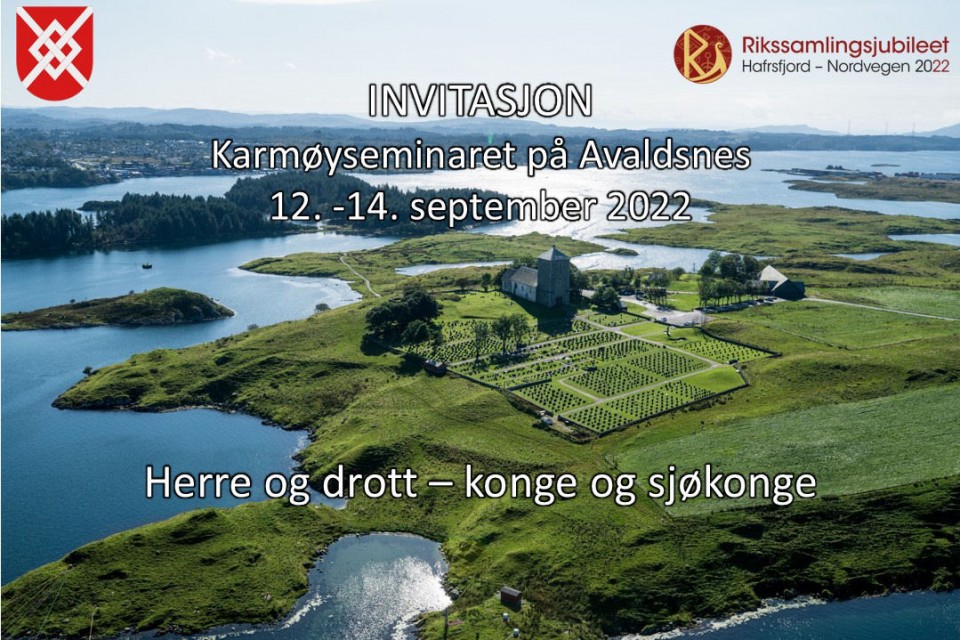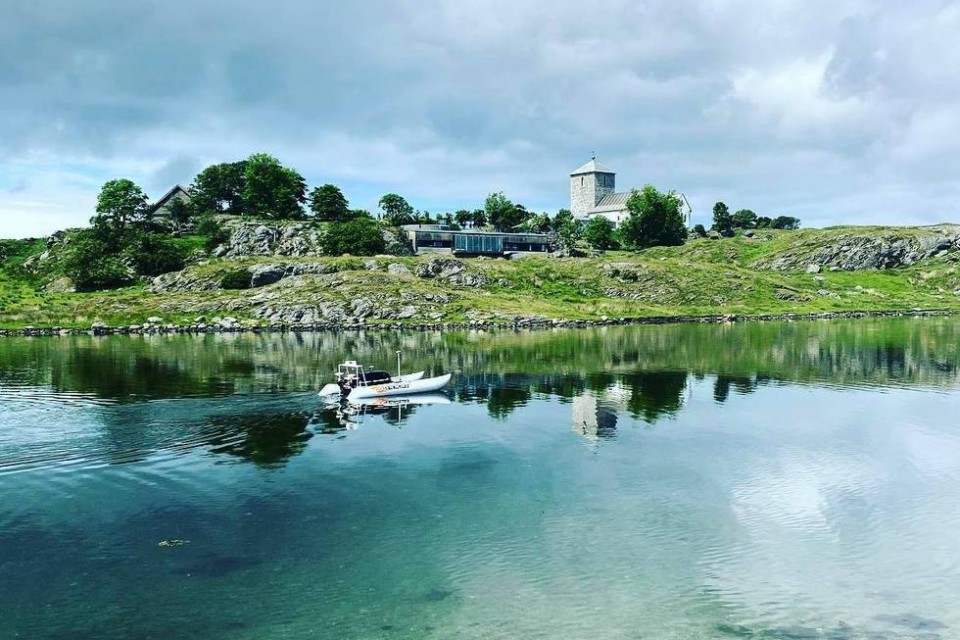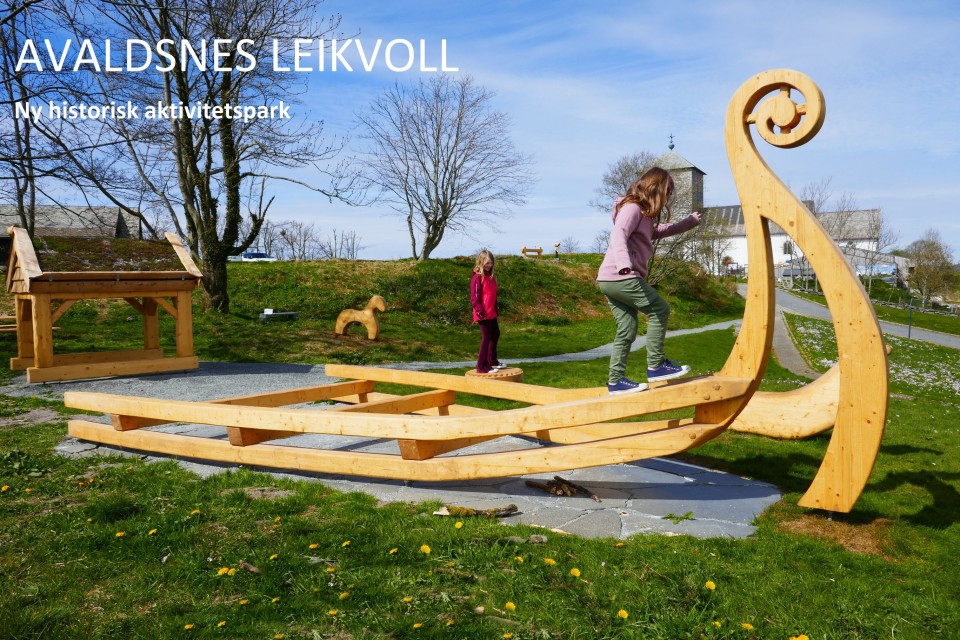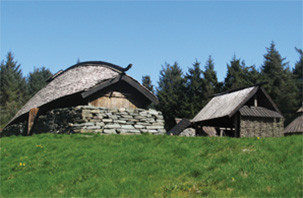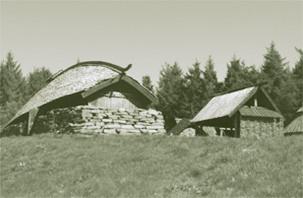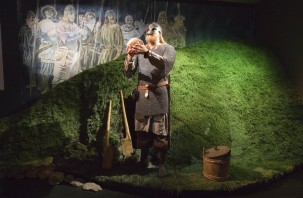What’s on?

The Viking Festival at Avaldsnes.Photo Oscar Andreas Osmundsen
THE COMMEMORATION OF THE 1150TH ANNIVERSARY OF THE UNIFICATION OF NORWAY
In 2022, it is 1150 years since the Battle of Hafrsfjord when Harald Fairhair is supposed to have unified Norway into one kingdom. The commemoration of the anniversary takes place where our first High King Harald Fairhair´s realm was centred: in Rogaland at the southwestern coast
Here at Avaldsnes, the main celebration starts with the Viking Festival on 9 – 12 June. In addition to all the activities you usually find at the Viking Festival, 10 Viking ships will arrive at Avaldsnes and participate during the celebration.
Read more about the commemoration here: Rikssamlingsjubileet Hafrsfjord – Nordvegen 2022.
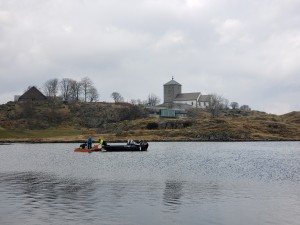
The research project «Avaldsnes Maktens Havn conducts» geophysical surveys of the harbor area (Photo Maktens Havn)
RESEARCH PROJECT: AVALDSNES – THE PORT OF POWER
13. of June 2019, we launched a new research project that is called Avaldsnes – the port of power. The project combines archaeology with technology from the offshore industry in a research study that will bring out new knowledge about the role the ports played for Avaldsnes, which was a maritime centre of power through 3000 years.
The project is a collaboration between the Stavanger Maritime Museum, the Archaeological Museum, UiS, the Avaldsnes Project, Saga Subsea and Geopluss.
In March 2022, the research project received a million gift from a private individual. The donation means that the project can take one big step forward. The funds will be used, among other things, to do more research on the Vikings’ ship technology, archaeological investigations under water and excavations of graves and harbor areas from the Viking Age and the Middle Ages.
The project also aims to excavate, conserve and exhibit the well-preserved medieval ship that is located in the sea at Avaldsnes. Maybe we can also find other shipwrecks from older time periods.
Se also:
Under vannflaten ligger et godt bevart middelalderskip, TV Haugaland:
Funn av middelalderbåt på Avaldsnes. NRK Rogaland
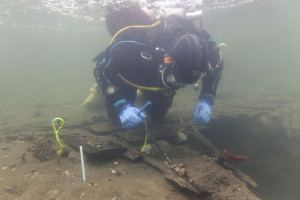
Marine archaeologist examines the well-preserved ship which is located in the sea at Avaldsnes. Photo: The Port of Power
Nå skal de heve skipet, Haugesunds Avis
Dette er virkelig et drømmeprosjekt, KarmøyNytt
ARCHAEOLOGICAL EXCAVATIONS OF THE MEDIEVAL ROYAL MANOR
In 2017, the Avaldsnes Royal Manor project carried out excavations of what proved to be the main building in the medieval royal estate at Avaldsnes. The building are situated on the plateau just south of St Olaf’s Church.
The ruins are currently covered by a temporary building that will protect the walls until the conservation is finished. This will take several years.
THE AVALDSNES ROYAL MANOR PROJECT
The Royal Manor project is an archaeological research project that is based on the old royal residence Avaldsnes by the strait Karmsundet. The project is led by prof. Dagfinn Skre, Museum of Cultural History in Oslo.

8. June 2017 we celebrated that the excavtions of the medieval royal manor could starts again. Mayor Jarle Nilsen and Dagfinn Skre, head of the Royal Manor project, take a High Five. Photo Karmøynytt
The Royal Manor project should initially investigate the story of the royal seat Avaldsnes and the rise of the Norwegian kingdom from approx. 200 to 1100 AD. During the excavations in 2012, the archaeologists made the unexpected discovery of walls from a royal hall built in stone. The Royal Manor project therefore expanded its thematic and chronological framework to include the institutionalized kingdom of the High Middle Ages.
The ruins were found two weeks before the Royal Manor project was to finish its investigations. For reasons of safety, the ruins were covered over again until a proper scientific survey could be conducted.
In December 2016, the Norwegian government granted NOK 5.4 million for investigations of the medieval ruins. Thus, the project was fully funded and the excavations of the royal estate could start on 6 June 2017.
2017. WHAT THE EXCAVATIONS REVEALED
It caused a sensation when the Avaldsnes Royal Manor project in 2017 revealed the ruins of this fortified royal manor. Nobody had thought that there would be so much well-preserved masonry, or that the main building was so huge! The discovery of this royal manor shows that the medieval kings invested heavily in Avaldsnes.

Approx. 25 m of the royal building is uncovered outside the cemetary, but it continues towards St Olaf’s church. The main building is 51 m long, included the tower. (Photo Marit Synnøve Vea)
The building had three floors built in stone, included the cellar. The cellar was used as a storage room, probably to store goods received from both taxation and trade.
On the second floor, there were kitchens, workshops and working rooms. On the third floor was the representative hall and other rooms used by the king when he was at Avaldsnes.
The building ends in a high gate tower. This was the main entrance to the royal manor. From the tower a covered passageway, perhaps in two floors, leads up to the chancel. The façade from the south to the church is 70 m. The main building, including the tower, is about 51 meters.
WHO BUILT THE MEDIEVAL ROYAL MANOR?
The building was constructed sometime between 1240-1319, probably either by Håkon Håkonsson, who built the Church of St Olaf, or by Håkon V Magnusson, who appointed St Olaf’s church as a collegiate church. So far, it seems that the gate tower was built by Håkon Håkonsson at the same time as the church, and that Håkon V Magnusson continued with the main building which was completed sometime around 1300.
Most medieval ruins in Norway are sacral buildings such as churches and monasteries. Only three other medieval royal manors are known in Norway. They are located in Oslo, Bergen and Tønsberg.
Read more about Avaldsnes in the Medieval Period.
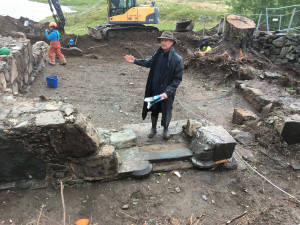
Dagfinn Skre inside the gate tower. The nicely curved stones at the bottom of the doorway are similar to those in St. Olaf’s church. This may indicate that Håkon Håkonsson built the tower at the same time as he built the church (Photo Marit S. Vea)
CONSERVATION OF THE RUINS
The ruins are currently covered by a temporary building that will protect the walls until the conservation is finished. The conservation will be done in close cooperation with NIKU. (The Norwegian Institute for Cultural Heritage Research) and it will take several years before it is finished. The conservation will enable the ruin to withstand wind and wear and tear.
The ruins, together with St Olaf’s Church, will be the significant elements in a medieval park that will be developed in the central church area.
The landscape around the ruin will be arranged so that the audience can walk around it. We will also provide information on how the royal estate may have looked and how the buildings were used.
Read more about the Avaldsnes Royal Manor Project
2017. THE NATIONAL GOVERNMENT GRANTS NOK 10 MILL TO THE AVALDSNES ROYAL MANOR PROJECT
In May 2017, the National Government granted NOK 10 million for the analysis and publication phase of the Avaldsnes Royal Manor project. This makes it possible to write Avaldsnes’s history into a broader European context. Ie a story about how the Germanic tribes of northern Europe were transformed into kingdoms and eventually states.
Back

